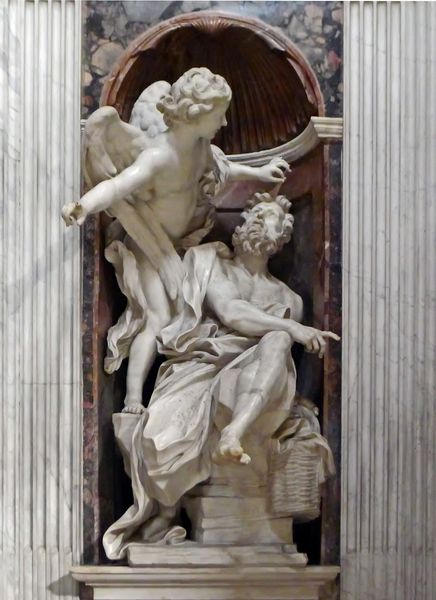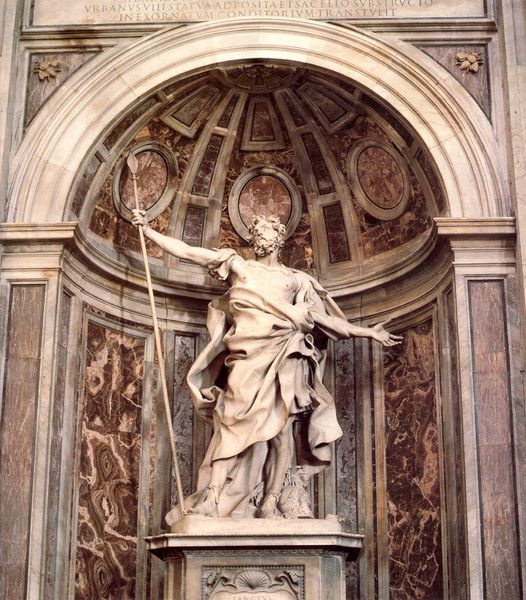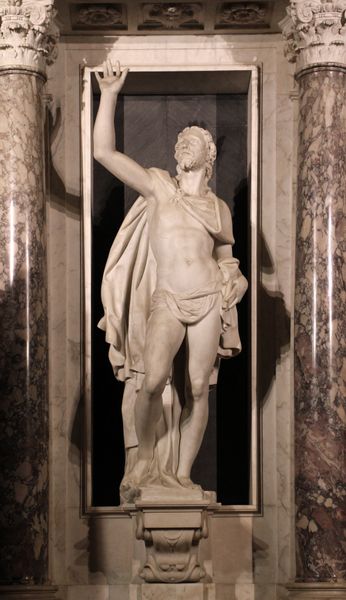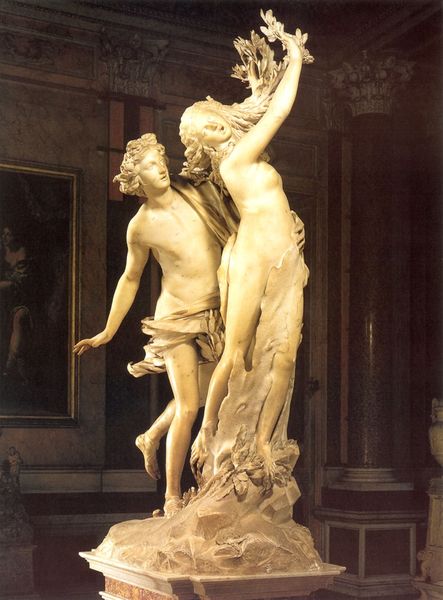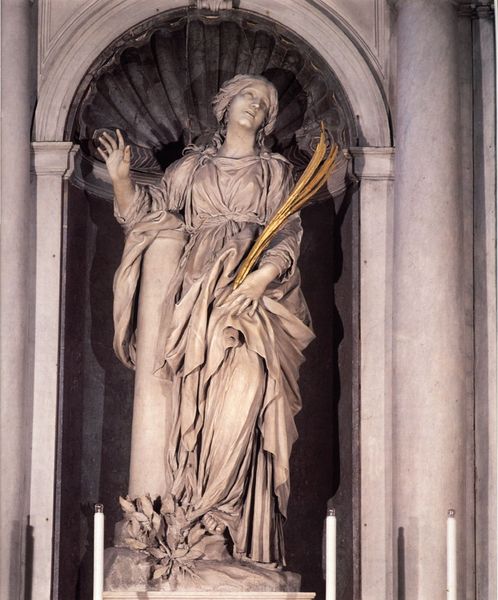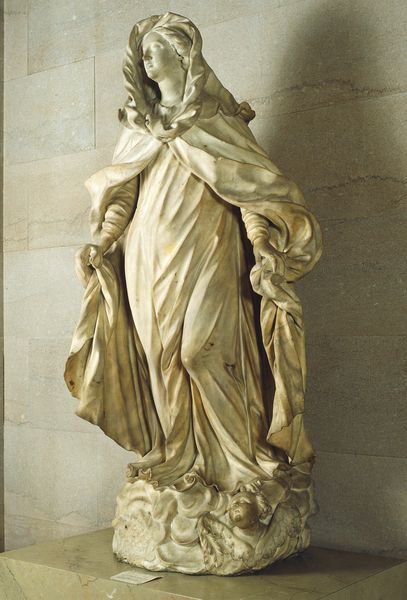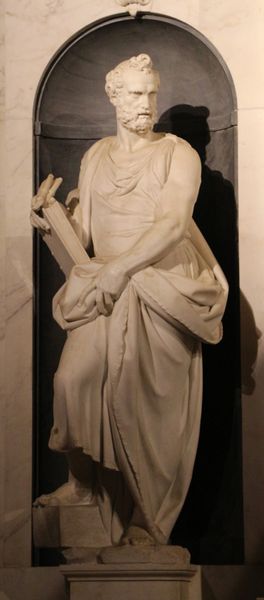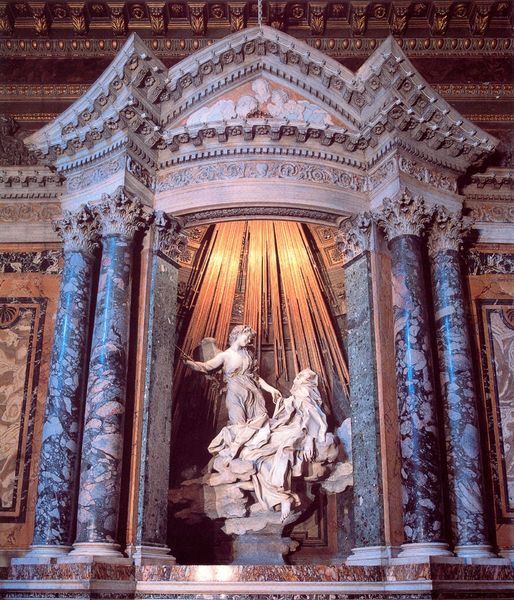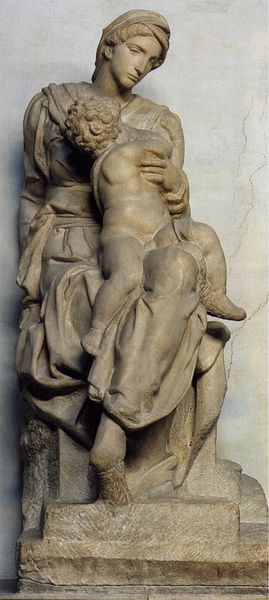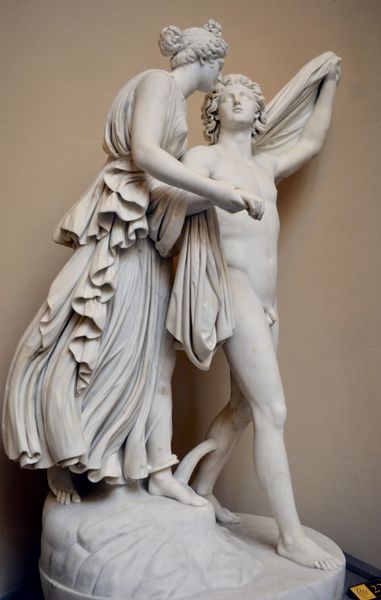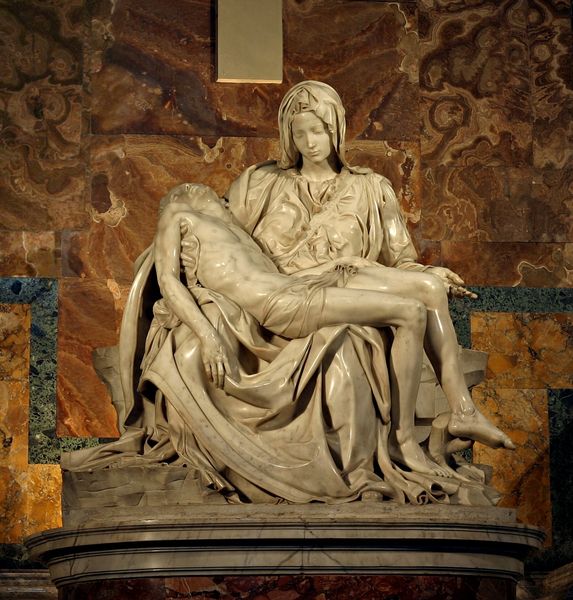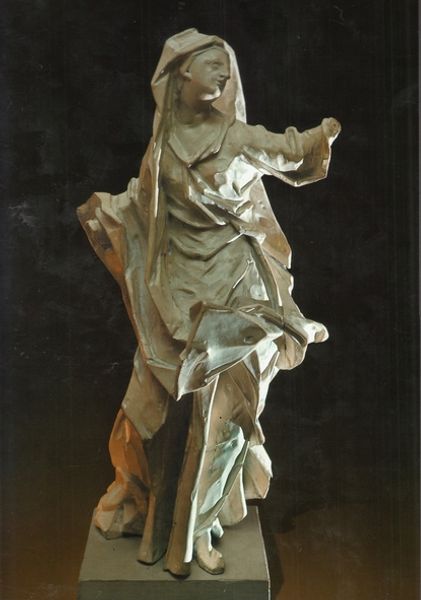
carving, sculpture, marble
#
statue
#
carving
#
baroque
#
sculpture
#
sculptural image
#
figuration
#
sculpture
#
history-painting
#
marble
#
nude
#
statue
Copyright: Public domain
Editor: So, here we have Gian Lorenzo Bernini’s “Daniel and the Lion,” a marble sculpture completed around 1650. The figure's upward gaze really strikes me, like he’s completely surrendered to something greater. What symbols do you see at play here? Curator: The obvious symbol is Daniel himself, representing unwavering faith and divine protection. Consider how light, both literal and metaphorical, falls upon his upturned face, emphasizing his trust. But the lion, seemingly docile, speaks volumes too. It subverts our expectations; traditionally, lions represent ferocity, power, even the devil. Yet here, it embodies a transformed nature, subdued by faith. It reminds us how symbols invert over centuries. Editor: That’s fascinating. I hadn't considered the lion's duality so deeply. So, the lion isn't just a prop, it’s integral to the sculpture’s message? Curator: Precisely! The lion mirrors Daniel's own internal transformation. He enters the den expecting death but finds salvation through belief. The lion, then, becomes a visual metaphor for that inner peace and spiritual awakening, the symbolic memory that humans change under circumstances. Editor: This connection to inner change really illuminates the emotional core of the work for me. What cultural meanings were understood from Daniel and lions in the 17th century in Italy? Curator: During the Baroque period, religious fervor heavily influenced artistic expression. Daniel was an extremely popular character from the Hebrew bible so a known symbol representing resilience, defiance of unjust rulers, the power of individual belief against impossible circumstances, with hope of a promised reward. Sculptors like Bernini often used familiar narratives, charged with emotion and cultural baggage, to convey messages of divine intervention and triumph of good. How do you read his bare physique? Editor: To me, the nudity is both vulnerable and heroic – representing both his helplessness, but also his unyielding bravery, I didn't read that before now! I see how Baroque audiences could identify more personally with these statues in familiar sacred settings, understanding their messages and emotionality. Curator: Indeed! What was once old is made new again with a specific understanding of contemporary memory.
Comments
No comments
Be the first to comment and join the conversation on the ultimate creative platform.
